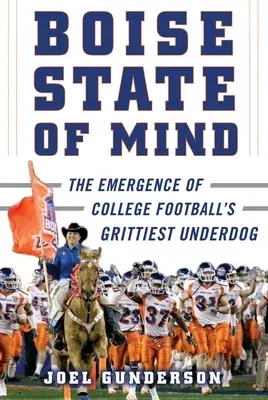With in-depth interviews with current and former players, coaches, and
administration, here is the entertaining story of the growth of a NCAA
football program that rose from anonymity to becoming the most
successful underdog in the country.
After decades of under-the-radar success, the Boise State Broncos became
a household name during the 2006-07 NCAA football season. That was when
the 12-0 Broncos were set to face the 11-2 Oklahoma Sooners in the
Fiesta Bowl. A David vs. Goliath event, everyone expected the Sooners,
who played in the highly competitive Big 12 conference and had dominated
since coach Bob Stoops took over in 1999, to beat the no-names from the
Western Athletic Conference. The match-up would end up becoming one of
the greatest college football games ever played, with Boise State
beating Oklahoma, 43-42, on a trick-play two-point conversion to win in
overtime.
But where did it all start? How did a school in Idaho become one of the
most successful and polarizing schools in the country? In Boise State
of Mind, writer Joel Gunderson tells the story of how the school went
from a junior college to Division I, climbing the ranks and building a
program that has since beaten such college football powerhouses as
Oregon, Georgia, Virginia Tech, and Oklahoma, and has the highest
winning percentage in the country since 2000.
While the city of Boise in Idaho has a population of approximately
223,000 people, the state, in general, is not a sports powerhouse. The
closest NFL team is the Seattle Seahawks, who are a 7.5-hour drive away.
There are currently only six players in the NFL that were born in Idaho.
So how did Boise State, known mostly for its blue turf, become known for
football excellence?
This is more than a Cinderella story. It's about how they arrived, how
they conquered, and how they've maintained in the cut-throat business
that is college football.

